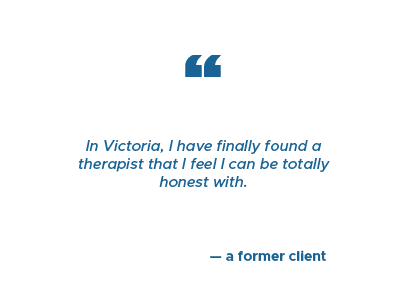Living through a time of massive uncertainty and change can rattle the most steadfast of people. Now, compound those feelings with possible financial insecurities, the stressors of childcare, the loneliness and monotony we may experience within our homes, and the risk of real health exposure for ourselves and our loved ones, and you might feel completely overwhelmed and clinging to ways to control every possible aspect of your life. Although there are times when efforts to exert such control can be effective, unfortunately it is not possible to control the outcome and timeline of an unprecedented pandemic.
Still, you might find yourself resisting the reality of the situation and engaging in an internal protest against having to accept the current restrictions. Perhaps you find yourself denying the impacts of COVID-19 and fighting against feelings of sadness and grief. Honor your struggle and fears by acknowledging and accepting their existence. Acceptance will help reduce your suffering, enable you to recognize your resiliency, and allow for self-compassion.
Keep in mind that while you can’t solve the pandemic, health fears, and social isolation, you can decide how to handle these painful moments to more effectively deal with emotional suffering. If you find yourself fighting against this new normal that has been thrust upon us, consider incorporating these four choices for coping with distress formulated by Dr. Marsha Linehan, the creator of Dialectical Behavior Therapy.
 Choice 1: Problem-solve
Choice 1: Problem-solve
Unfortunately, this does not mean you can “fix” or “end” the pandemic or resume life with the same sense of normalcy you knew only a few months ago, but it does mean you can practice safety and reduce the spread of the virus. Problem-solving might entail identifying areas for action that lie within your control. For example, you can:
1. Ensure a consistent structure and routine in your day-to-day life. Your daily routine has fundamentally changed. If possible, try to maintain a sense of normalcy and structure in your daily activities. This may be as simple as going to bed and waking up at consistent times throughout the week. If you’re accustomed to getting up at a certain time and showering before work, continue to do so. Consider how “typical” weekends look and try to accomplish similar tasks then, trying to avoid blurring work and personal time. Research supports that the absence of daily routine can increase posttraumatic stress symptoms and functional impairment, even in the midst of ongoing adversity (Pat-Horenczyk, R., Schiff, M., & Doppelt, O., 2006), so don’t underestimate the power of maintaining a sense of structure.
2. Do what makes your body feel good. Incorporate some physical activity in your day-to-day routine if you can. Reflect on your commute in the past – did you walk to work, even to your car or to a public mode of transportation? Did you leave the office for lunch? Stuck inside, you are no longer expending your energy throughout the day. Reintegrating physical activity and movement can help you actively move through excess energy and emotions. You may be feeling increased stress and anxiety due to external factors you can’t control; instead of releasing energy and working through stress, you may feel consumed by it. When our sympathetic nervous system becomes triggered (our fight, flight, or freeze response), we need to complete our stress response cycle: this means conveying to our bodies and minds that we are not in immediate danger and can relax again. Otherwise we run the risk of remaining stuck in the highly reactive, threat-based way of responding. The challenge with this lies in the evolutionary forces that created the stress response in the first place. Unlike our ancestors who might have completed their stress response by running away to escape lions and tigers, we cannot “run away” from the pandemic in the same way. You might notice a disconnect from what activates your stress and the challenges to “solve” your stress, especially when a solution does not exist. You may experience stress from the pandemic through anger, frustration, or rage (your fight response), worry, fear, or even terror (your flight response), or depression and despair (your freeze response). To complete the stress response cycle, consider incorporating physical activity, whether it’s a run, a walk around your neighborhood, or even a dance party in your own home. Other ways to complete the stress response cycle include sharing affection with others, a good cry, progressive muscle relaxation, self-care, and sleep. (Nagoski, 2015).
3. Identify acts of self-care. What helps soothe you? Is it lighting a special candle to transition between the end of a workday and the start of the evening? Using a weighted blanket to fall asleep at night? Enjoying your first few sips of coffee and moments of solitude before the kids wake up? Identify 2-3 things you do each day for yourself and remember to incorporate these acts daily, noticing the difference in your mood when you practice self-care. By incorporating these loving acts of self-kindness, you will get better at self-soothing when feeling activated and anxious.
 Choice 2: Change your perspective
Choice 2: Change your perspective
By changing your perspective, you can become more mindful of your current emotions, which can help you to reduce the intensity of a particular emotion. This does not mean you have to be happy about the pandemic. Focus on whether you can allow feelings of frustration, anger, sadness, or despair to move through you instead of avoiding or fighting the feeling. This can be accomplished by:
1. Noticing and using nonjudgmental language. Understandably, this moment in time feels unending, overwhelming, and fear-inducing, but consider how your language might influence your emotional experience. Try noticing what feelings emerge when you express that “life will never be the same” and when you identify actual facts in the here and now, such as, “The running paths are closed. My favorite restaurant is closed. I can’t visit my friends.” By checking the facts of the situation and using more neutral, objective, nonjudgmental language, you can better maintain perspective and build awareness when your mind starts to produce black-and-white, catastrophic scenarios. When overwhelming thoughts occur, check the facts objectively and consider broader outcomes instead of focusing on only the worst-case ideas.
2. Journaling to process feelings. Research shows that reflective journaling focused on emotional issues impacting one’s life helps reduce depressive symptoms (Krpan, K. M., Kross, E., Berman, M. G., Deldin, P. J., Askren, M. K., & Jonides, J., 2013). Journaling helps with emotional regulation, improving your ability to observe, process, and cope more effectively versus being controlled by your emotions. Try processing the thoughts and feelings swirling in your head, especially when feeling distressed. Then, as objectively as possible, try rereading your words back to yourself, as if someone else wrote them. This can help you detach from your thoughts and recognize that your thoughts are not necessarily facts.
 Choice 3: Do nothing and stay miserable
Choice 3: Do nothing and stay miserable
Of course, you always have the option to do nothing and remain scared, anxious, and frustrated at the restrictions in place and the potential health risks and their complications. Remember, this is an active choice, just like the choice to problem-solve or change your perspective. You are entitled to holding on tightly to fear, sadness, and anger, but be sure to notice its impacts over time. Do you find yourself more irritable, more despondent, or less motivated as the weeks go by? Consider the impacts on your mental, emotional, and physical health and the implications to those around you and consider at what point you might make another, more adaptive choice.
 Choice 4: Radically accept the current reality
Choice 4: Radically accept the current reality
To radically accept the current situation means to let go of how things “should be” and instead, accept them as they are. While radical acceptance means acknowledging wholeheartedly the reality of the situation, it does not mean “liking” or “agreeing with” the pandemic, nor the restrictions on your life. When you radically accept a situation, you acknowledge and accept the moment exactly as it is, without attempts to exert control or fix what you cannot. By relinquishing the need for control, you can open yourself up to greater support and coping achieved through less resistant and more adaptive thoughts. In fact, once you stop fighting with yourself to accept the current reality, you become receptive again to Marsha Linehan’s options for approaching any problem: problem-solving or changing your perspective. Acceptance can be a powerful tool that allows us to discover that which is within our control, accept our current struggles, and utilize our internal strengths and resiliency to identify actions that move us forward.
References
Krpan, K. M., Kross, E., Berman, M. G., Deldin, P. J., Askren, M. K., & Jonides, J. (2013). An everyday activity as a treatment for depression: the benefits of expressive writing for people diagnosed with major depressive disorder. Journal of Affective Disorders, 150(3), 1148–1151. https://doi.org/10.1016/j.jad.2013.05.065
Nagoski, E. (2015). Come as You Are (pp:114-124). New York: Simon & Schuster.
Pat-Horenczyk, R., Schiff, M., & Doppelt, O. (2006). Maintaining routine despite ongoing exposure to terrorism: a healthy strategy for adolescents?” Journal of Adolescent Health, 30(2), vol. 39, 199–205., doi:10.1016/j.jadohealth.2005.11.021.


 As a psychotherapist, I work with clients to validate their struggles, help them understand past patterns and motivations, derive new insights, and ultimately lead to acceptance and change. I believe all people comprehend their wants and needs inherently, and therapy can serve as the conduit to better understand and elicit the best approach for everyone, allowing them to advocate for the future they imagine for themselves.
As a psychotherapist, I work with clients to validate their struggles, help them understand past patterns and motivations, derive new insights, and ultimately lead to acceptance and change. I believe all people comprehend their wants and needs inherently, and therapy can serve as the conduit to better understand and elicit the best approach for everyone, allowing them to advocate for the future they imagine for themselves.